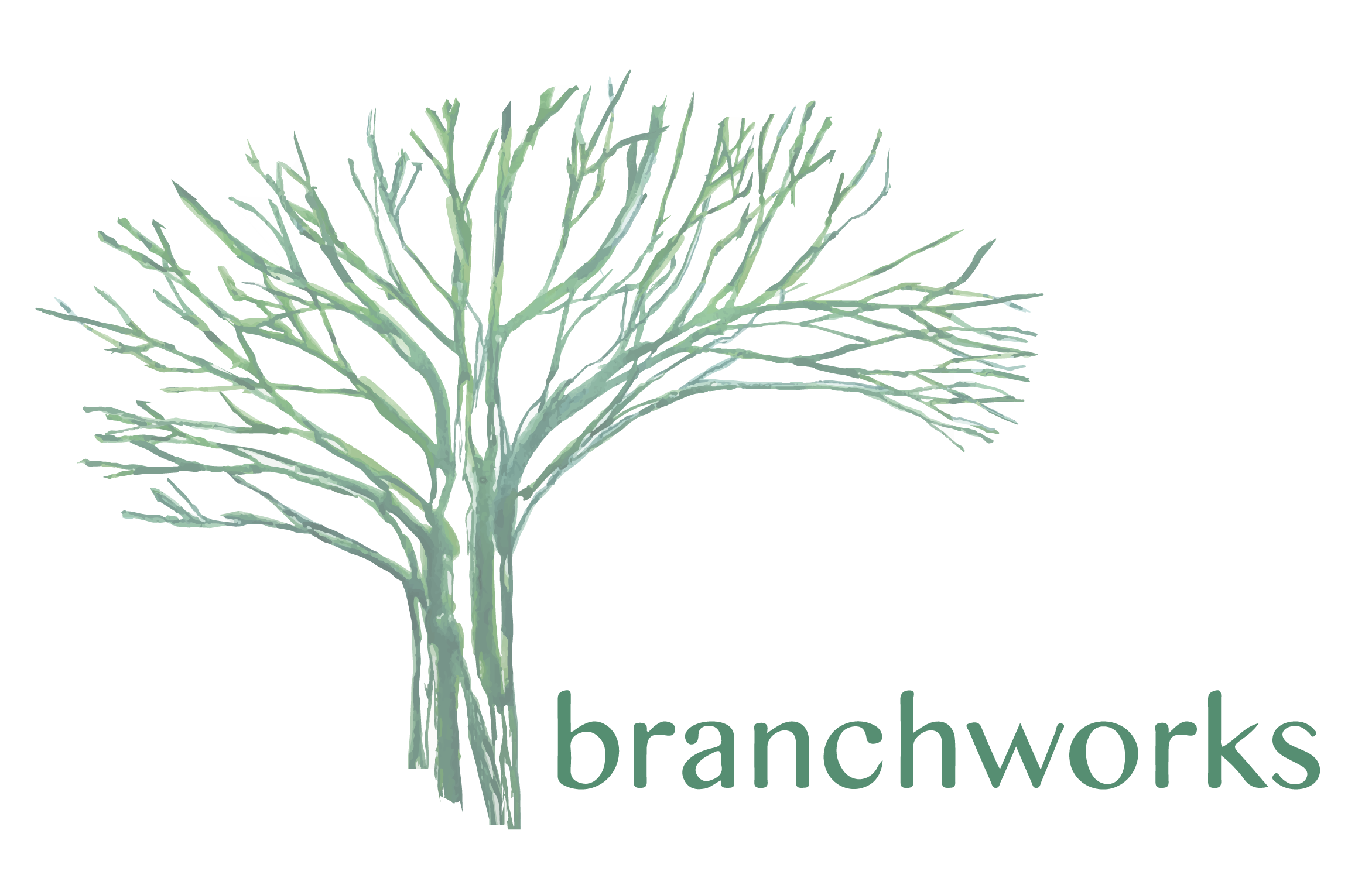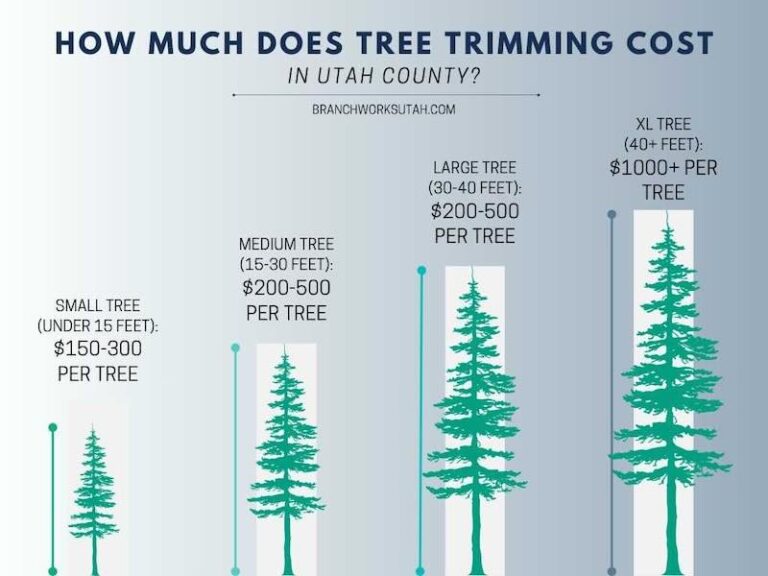Have you been looking out your back window at a tree that’s just gotta go? Maybe it’s blocking your view of Timp, crowding the power lines, or simply past its prime. But before you grab the chainsaw and start to cut the tree in your backyard, it’s important to understand the legalities, safety considerations, and when it’s best to call in a professional.
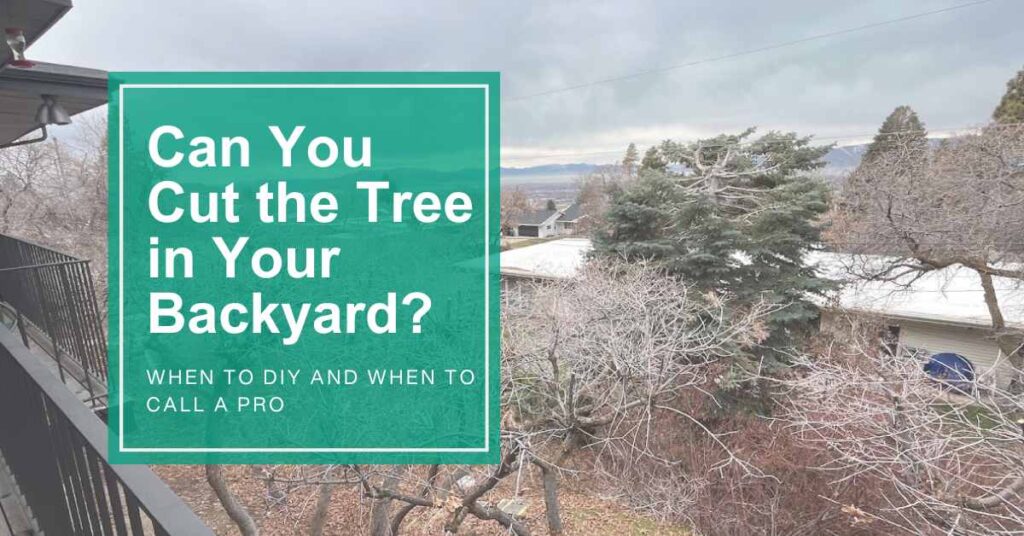
Can I cut a tree on my private property?
In general, yes, as property owners you can remove trees on your own property. But there are always a few caveats.
What To Do if the Tree Is on Your Neighbor’s Property
Make sure the entire base of the trunk sits on your land. If it straddles the property line, you’ll need your neighbor’s permission before cutting it down. (Utah state laws allow them to claim up to three times the value of the tree if removed without consent!)
On the property line:
If the tree base is on the property line, both you and your neighbor share ownership for the tree. In this case, it’s a good idea to consult with your neighbor before making a big change to the tree!
If you have a good relationship with your neighbor, it’s common to split the cost of tree removal.
On your neighbor’s side:
If the tree base sits on the opposite side of the fence, the tree is your neighbor’s property.
However, Utah law says that your property rights extend up into the sky and down into the earth. So if your neighbor’s tree branch passes over your fence, you may prune it – but only up to the property line. This includes the roots of the tree as well.
As always, best practice would be to consult with your neighbor before doing anything, even if a limb or a root is on your side. If the tree is causing problems on your land, talk to your neighbor and see if they’d be open to trimming or removing it together.
What to Do if a Tree Is a Safety Hazard:
If the tree is near or touching power lines, see below in “When do I need to call the utility company?”
Depending on the type of tree, you may be able to cut your tree in your backyard yourself. However, larger trees are much more complicated than small trees and you should consider hiring a professional. See more below in “When to call a professional tree service”
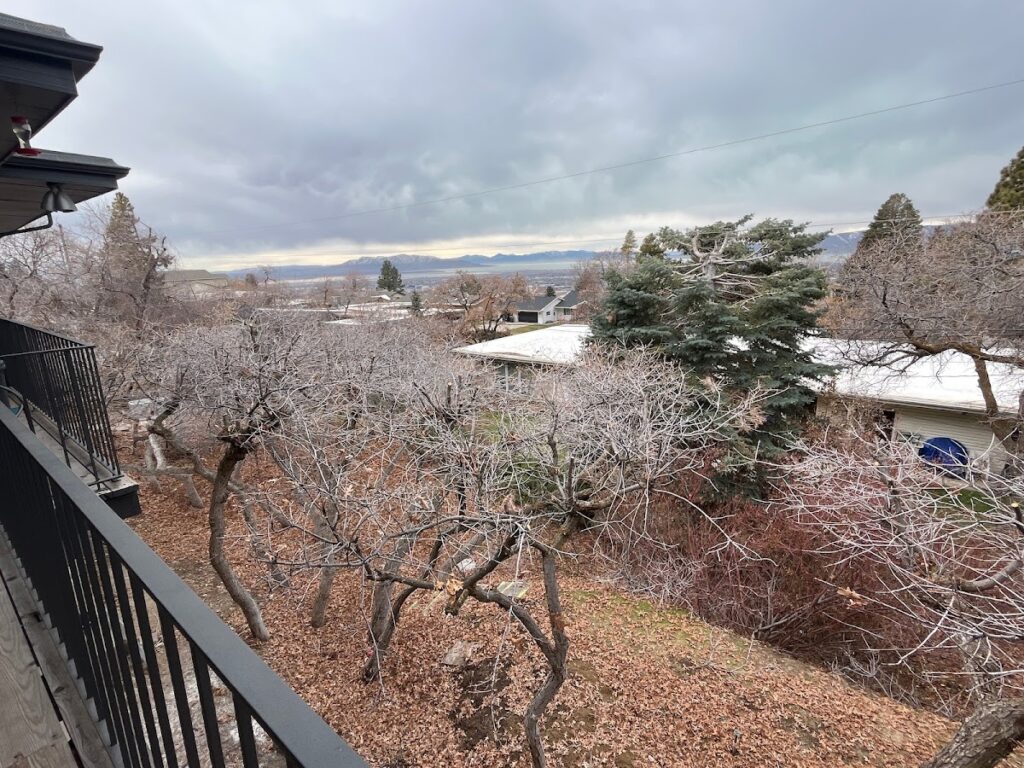
What are local laws around cutting my trees in Utah?
While Utah doesn’t have statewide tree protection laws, many cities and counties do. These regulations might dictate needing a tree removal permit or other local laws or local ordinances.
Do I need a tree removal permit?
In Utah, no; to cut a tree in your own backyard, you do not need a tree removal permit in general. You can always contact your city’s or local governments planning department for advice.
Where to find your local regulations in Utah
Most Utah city and county websites have information on tree removal permits and any local ordinances. In addition, you can check out the Utah Division of Forestry for information on state laws around tree maintenance, tree planting, and public land.
What about street trees?
Depending on your city ordinance, maintaining street trees in park strips is your responsibility, (even if they were planted by the city or are technically city property).
However, if the tree is becoming a safety hazard (e.g., roots buckling the sidewalk, curb, or gutter), the city might be responsible for removing the tree.
You should contact your local government and see if they have a city arborist or forester for more information.
What about protected trees or a heritage tree?
This is a very rare occurrence, but certain tree species and mature trees are protected by the state of Utah. (You’d probably already know if you had one of these in your yard!)
Utah state law protects heritage trees. These are “rare, threatened, or vanishing” trees that are native species or well-adapted to Utah climate AND they also have historical significance or are exceptionally large or old trees.
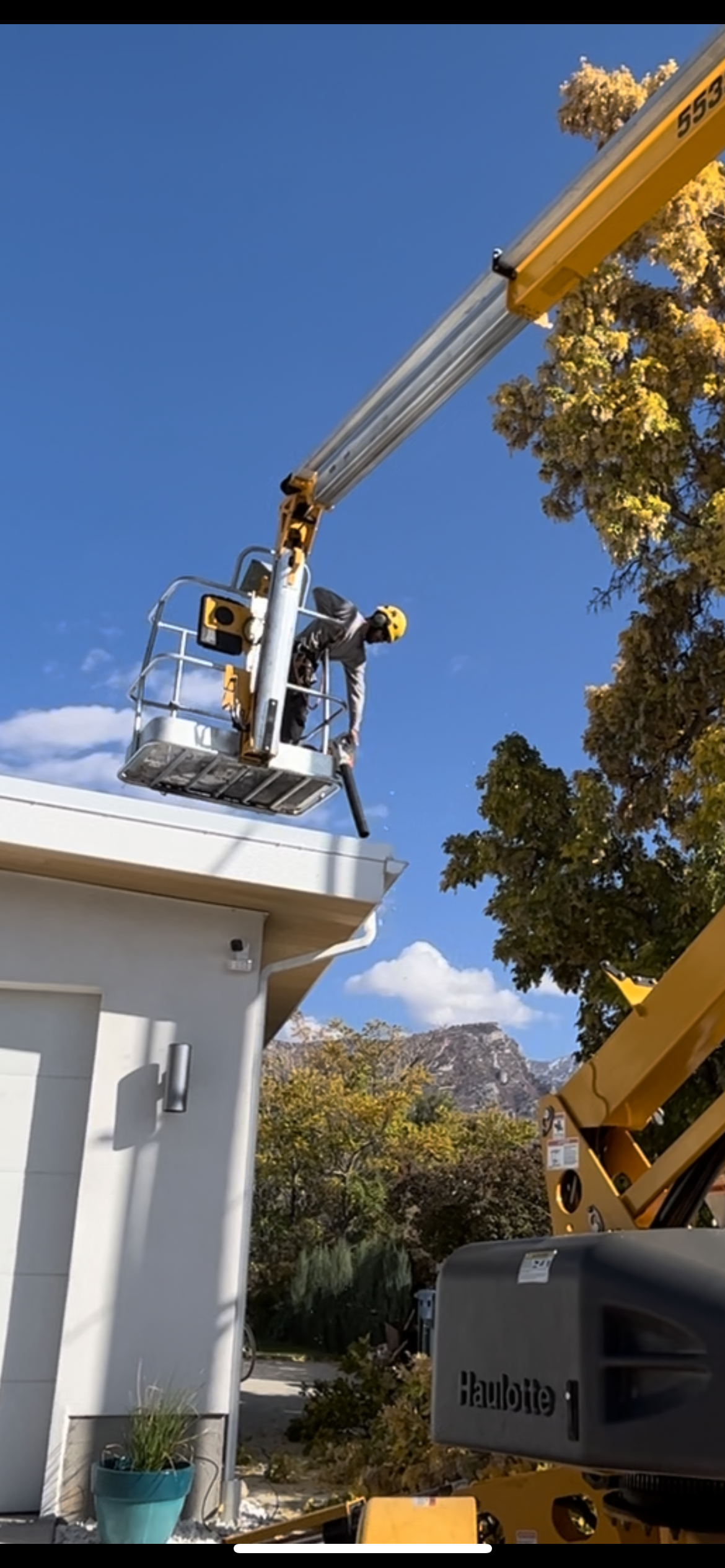
When do I need to call the utility company?
If your tree is anywhere near power lines or utility lines, calling the utility company before any cutting is crucial.
Utility companies can assess the situation. They will be able to safely remove any branches that pose a risk, or recommend how to proceed with a tree trimming company. The power company can usually turn off power to your house before doing any trimming as well.
When to Call a Professional Tree Service: Dead Tree, Large trees, and Other Safety Risks
While some small, healthy trees might be manageable as a DIY project, consider calling a professional for:
- Dead tree or diseased trees: These dangerous trees pose a significant falling hazard and require proper removal techniques.
- Large trees: Cutting down larger trees is a dangerous undertaking that requires expertise and specialized equipment. If you’re just pruning or trimming lower branches, you may try it yourself, but removing a whole tree is best left to a licensed tree expert.
- Poorly placed trees: Trees near power lines or structures can be tricky to remove safely. Large branches hanging over structures such as fences, sheds, or homes can cause a lot more property damage than you’d expect. (It’s usually safer and cheaper to pay for a tree service than to pay to repair for a hole poked in your roof!)
Ultimately, when dealing with trees, safety comes first. If you’re unsure about your ability to handle the job safely and legally, call a professional arborist. They can assess the situation, obtain any necessary permits, and ensure the job is done right.
Get a free tree work estimate in Utah County
If you’re in Utah County, feel free to call or text BranchWorks for a free, no-pressure consultation for your tree. We would be happy to help you assess the best course of action for you and your tree care needs.
